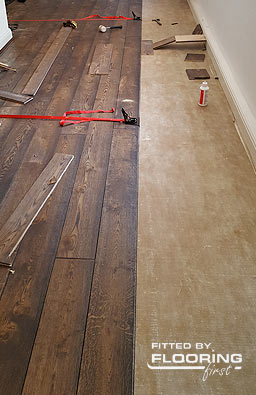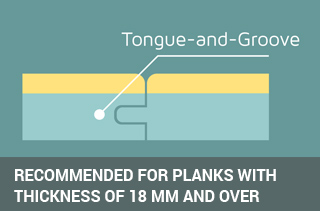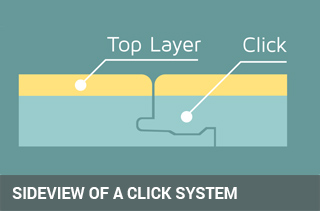Back to Wood Floor Fitting
Solid Wood vs. Engineered Wood Floors: Uncover the Perfect Flooring Fit
 Selecting the right type of wood flooring—whether solid or engineered—can be a challenging decision for many homeowners. With each option offering its own set of benefits and drawbacks, it’s important to consider not just the aesthetics, but also the long-term durability, maintenance needs, and suitability for your home’s environment. Factors such as temperature fluctuations, humidity levels, and installation location play a significant role in determining which flooring will perform best over time. To help you make an informed decision that suits both your style and practical needs, let's explore the advantages, disadvantages, and pricing of both solid and engineered wood flooring options in detail.
Selecting the right type of wood flooring—whether solid or engineered—can be a challenging decision for many homeowners. With each option offering its own set of benefits and drawbacks, it’s important to consider not just the aesthetics, but also the long-term durability, maintenance needs, and suitability for your home’s environment. Factors such as temperature fluctuations, humidity levels, and installation location play a significant role in determining which flooring will perform best over time. To help you make an informed decision that suits both your style and practical needs, let's explore the advantages, disadvantages, and pricing of both solid and engineered wood flooring options in detail.
Solid Wood Flooring
Solid wood floors, made from materials such as oak, cherry, or maple, offer timeless charm and exceptional durability. One of the key benefits of solid wood is its ability to be re-sanded multiple times, allowing you to restore its natural beauty even after years of wear and tear. This makes it a long-term investment.
However, there are some drawbacks. Solid wood flooring is sensitive to humidity. In environments with damp subfloors, frequent flooding, or rapid humidity changes, the wood is prone to shrinkage and warping.
Consider the Environment
For example:
- South-facing conservatories with significant exposure to sunlight and temperature fluctuations
- Cellars with consistently high humidity
Both of these environments could cause the deformation of solid wood planks, making them less suitable for such spaces.
Engineered Wood Flooring
Engineered wood blocks typically come in thicknesses ranging from 18 to 20mm, with a natural wood top layer that is around 5mm thin. While this top layer allows for refinishing and sanding once or twice during its lifespan, it also means that engineered wood flooring has a shorter lifespan compared to solid wood, typically lasting around 5 to 7 years.
Pricing Considerations
The price of engineered wood flooring can vary significantly, starting at £30.00 per square meter (excluding VAT). In some cases, it may even exceed the cost of solid wood flooring with a similar surface finish.
However, it's essential to assess these price differences for your specific installation conditions. In areas with temperature or humidity fluctuations, the higher cost of engineered flooring may be justified due to its greater resilience and suitability for environments where solid wood might warp or shrink.
To summarise:

Hardwood Floors: Timeless Elegance
- Material: Made from a single piece of 100% natural wood.
- Profile: Commonly features a tongue-and-groove design.
- Humidity Resistance: Less resistant to high humidity levels.
- Installation Difficulty: Generally harder to install; requires more expertise.
- Seasonal Impact: Expect minor gapping unless temperature is consistently maintained year-round.
- Lifespan: Can be sanded multiple times, leading to a longer lifespan.
- Cost: Typically more expensive than engineered flooring.
- Installation Location: Can be installed on or above grade using nails or staples.

Engineered Floors: Versatility and Durability
- Material: Made from multiple layers of different wood species.
- Profile Options: Available in tongue-and-groove or click-lock systems.
- Temperature Resistance: More resistant to temperature changes, ideal for fluctuating environments.
- Ease of Installation: Incredibly easy to install, even for DIYers.
- Seasonal Movement: Minimal movement due to seasonal changes.
- Lifespan: Can only be refinished two or three times, leading to a shorter lifespan.
- Cost: Usually cheaper than hardwood floors.
- Installation Location: Can be installed above, on, or below grade, providing more versatility.
By carefully considering the unique characteristics of solid and engineered wood flooring, you can make the best choice for your needs, budget, and the specific conditions of your installation area. Ultimately, the decision comes down to finding the perfect balance between beauty, functionality, and longevity for your space.
Still Unsure Which Wood Floor Is Right for You?
Choosing between solid and engineered wood flooring can be tricky, but we’re here to help. Book a free site visit with our flooring specialists or get in touch for expert advice tailored to your space, style, and budget.